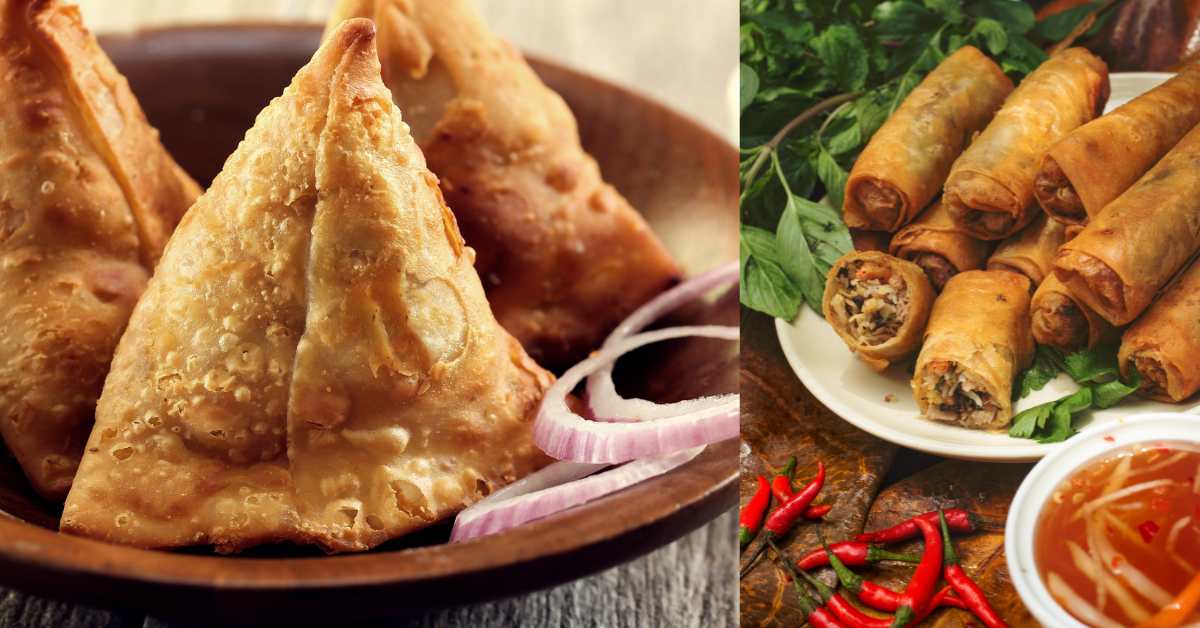Differences between Samosa and Spring Roll
Samosas and spring rolls are popular snack foods that are enjoyed all around the world. While they may look similar and are both served as a crunchy, savory treat, there are several key differences between the two. In this article, we will explore the differences between samosas and spring rolls and help you understand why these differences matter.
Origins of Samosa and Spring Roll
Samosas are a traditional snack food from the Indian subcontinent, where they have been enjoyed for centuries. Spring rolls, on the other hand, are a popular snack food in East and Southeast Asia, with a history that dates back to the Tang dynasty in China.
Ingredients used in Samosa and Spring Roll:
Samosas are made using a pastry dough that is filled with a mixture of spices and either vegetables or meat. The pastry is then deep-fried to create a crispy, crunchy texture. Spring rolls, on the other hand, are typically made using a thin, egg-based wrapper that is filled with a mixture of vegetables or meat and spices. The filled wrapper is then fried or baked to create a crispy exterior.
Texture deference in samosa and spring roll:
Due to the differences in the ingredients used to make the pastry, samosas tend to have a denser and flakier texture compared to spring rolls. The egg-based wrapper used for spring rolls is lighter and more delicate, resulting in a lighter, crunchier texture.
Flavors used:
The flavor of samosas and spring rolls also varies depending on the ingredients used to make the filling. Samosas typically have a bold, spiced flavor due to the mixture of spices used in the filling. Spring rolls tend to have a milder flavor, as the filling is typically made using a combination of vegetables and spices.
Conclusion: In conclusion, while samosas and spring rolls may look similar, there are several key differences between the two, including their origins, ingredients, texture, and flavor. Understanding these differences can help you make an informed decision about which snack is right for you. Whether you prefer the bold, spiced flavor of samosas or the lighter, crunchier texture of spring rolls, both are sure to be a hit with your taste buds.
FAQ:
What are samosas made of?
Samosas are made using a pastry dough that is filled with a mixture of spices and either vegetables or meat. The pastry is then deep-fried to create a crispy, crunchy texture.
What are spring rolls made of?
Spring rolls are typically made using a thin, egg-based wrapper that is filled with a mixture of vegetables or meat and spices. The filled wrapper is then fried or baked to create a crispy exterior.
What is the origin of samosas?
Samosas are a traditional snack food from the Indian subcontinent, where they have been enjoyed for centuries.
What is the origin of spring rolls?
Spring rolls are a popular snack food in East and Southeast Asia, with a history that dates back to the Tang dynasty in China.

